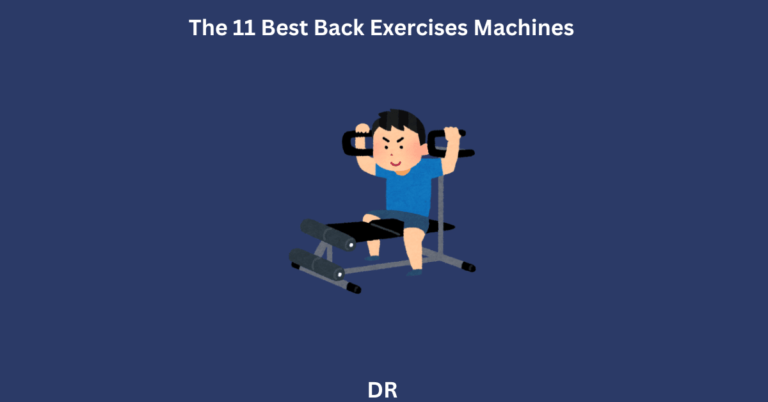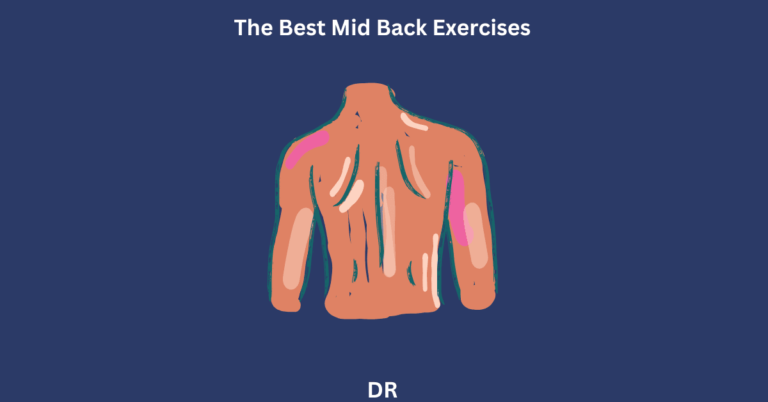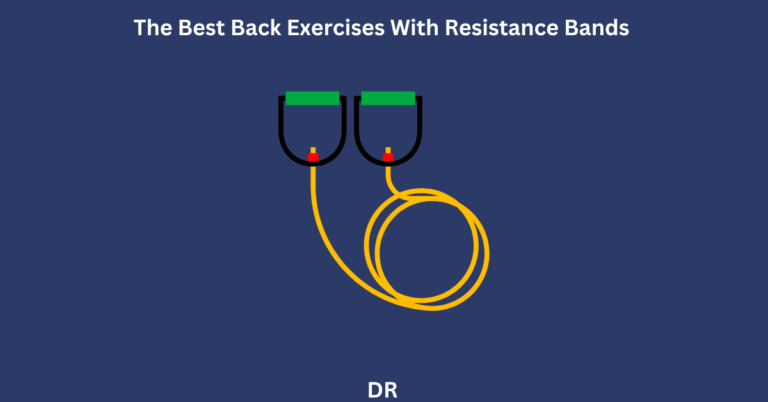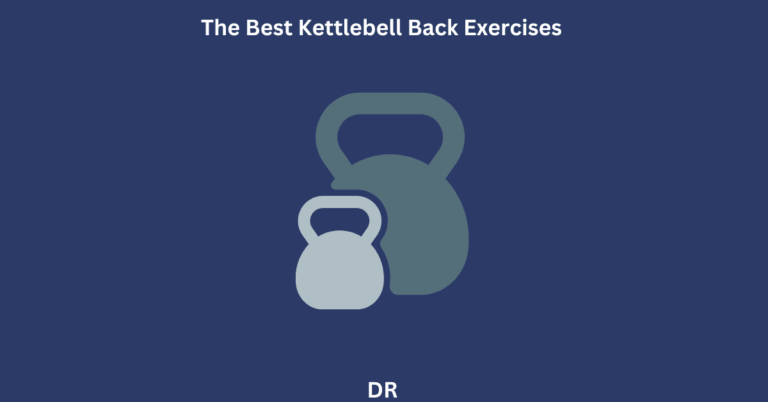How To Do The Back Extension Exercise in 2024, the best guide
Back Workout Basics
Starting a fitness plan? Let’s chat about why back exercises matter and what magic back extensions can add to your routine.
Importance of Back Exercises
You can’t ignore the back exercises if you want a well-rounded workout. I’ve seen firsthand how focusing on those back muscles can really pay off—better posture, less back pain, you name it. Your back does a lot more than just hold you upright; it supports the spine and lets you move in all sorts of cool ways. Tossing in exercises for those muscles can make you feel stronger and more stable, kind of like building a better foundation for a house.
Benefits of Back Extensions
Back extensions, or hyperextensions in gym lingo, are your best buddy for hitting the lower back muscles, like the erector spinae. According to Healthline, this exercise doesn’t just work the back; it also gets the core, glutes, hips, and shoulders involved. Here’s why they rock:
- Making the Lower Back Stronger: Back extensions beef up those lower back muscles, which can be a lifesaver if you’re dealing with pain from hunching over a desk. They do wonders for folks glued to their chairs all day.
- Fixing Your Posture: Doing back extensions often helps straighten you out, stabilising the spine and undoing the mess from too much sitting.
- Flexibility Boost: The more you do these, the more your lumbar spine—the tiny heroes down there—gets flexible and mobile. Handy for moving your whole body with ease.
- Less Chance of Hurting Your Back: Strengthened support muscles around your spine means fewer injuries. You’re setting up a reliable base, so your back doesn’t surprise you with strains.
| Benefit | Description | Source |
|---|---|---|
| Strengthening Lower Back | Targets lower back and core, eases pain from weak muscles | Healthline |
| Improving Posture | Stabilizes spine, undoes prolonged sitting mishaps | Cathe |
| Enhancing Flexibility | Boosts lumbar spine bending skills | Total Back |
| Reducing Risk of Back Injury | Pumps up spine-supporting muscles | Cathe |
Pop back extension exercises into your weekly workouts to make real strides in back health and your whole body gets a boost too. Curious about more back moves? Check out dumbbell back exercises and cable back exercises. If you’re on the lookout for back strengthening exercises for seniors, there are routines made just for that.
Starting Back Extensions
Proper Form and Technique
Back extension exercise got its perks if you do it right. Mess it up and you’re looking at more groans than gains.
- Get comfy face down on a hyperextension bench, making sure your ankles are fastened tight.
- Cross your arms across your chest or rest them gently behind your noggin.
- Tighten up your core to keep that spine happy and gently lift your upper body until you’re in a neat straight line with your lower bits.
- Ditch the jerky moves; it’s all about that smooth operator vibe.
- Mind your head and neck; keep ’em chill to steer clear of any unwanted strain.
- Ease yourself back down to where you started.
Remember these golden nuggets:
- Neutral Head and Neck: No awkward angles here, just cool alignment.
- Smooth Moves: Skip the whiplash with slow and steady wins.
- Core Love: Keeping those middle muscles engaged is a solid support tactic.
For more guidance on gear-centric back exercises, cruise over to our section on back exercises machine.
Frequency and Precautions
How often you should be getting those back extensions in really depends on where you’re at in your fitness journey. If you’re just getting started, aim for a chill 2-3 times a week. As you beef up your strength and staying power, feel free to up those numbers.
Back extensions can do wonders, but don’t skip the fine print:
- Hit up a Doc or Trainer: If you have any shoulder or back niggles, getting a pro’s opinion before diving into these exercises is worth your while (Healthline).
- Steer clear of over-bending: Going too far can spell trouble for your spine.
- Tune into your body: If things start hurting, dial down the pace or load. Throw some ice on the sore spots to soothe post-exercise (Total Back).
- Stick with it: Regular reps not only help with mobility but shower your spine with care, fending off lower back pain (Total Back).
| Exercise Frequency | Recommended Sessions per Week |
|---|---|
| Beginner | 2-3 |
| Intermediate | 3-4 |
| Advanced | 4-5 |
A good mix and matching up your routine can turbocharge your results. Dig into similar moves for a hardcore back routine check our articles on lower back exercises with weights and dumbbell back exercises.
Different Ways to Perform
Back extensions are a great way to strengthen that lower back of yours! There’s a couple of different styles, allowing you to choose what works best with the gear you have and your fitness level. Here, we’ll talk about the two main styles: using a fancy back extension machine and floor-based exercises you can do anywhere.
Back Extension Machine
The back extension machine is as cool as it sounds and does wonders for your back (WebMD). There are two types to get familiar with: the 45-degree Hyperextension Bench and the 90-degree Roman Chair.
- 45-Degree Hyperextension Bench: Beginner-friendly and poking out at an angle, perfect for engaging your lower back, glutes, and hamstrings.
- 90-Degree Roman Chair: More flatly aligned with the ground, giving your muscles a tougher run.
Doing back extensions on one of these bad boys involves:
- Setting yourself on the machine so your hips are on the pad, and your feet are snug under the footpads.
- Position your arms across your chest or behind your noggin.
- Keep a straight line from your head to your hips.
- Dip your upper body down slowly, then rise back up so you’re in line with your legs, working that lower back and those glutes.
| Machine Type | Muscles Worked |
|---|---|
| 45-Degree Hyperextension Bench | Lower back, glutes, hamstrings |
| 90-Degree Roman Chair | Lower back, glutes, hamstrings |
Keep your neck and head in a neutral spot to dodge any overextension woes (Healthline).
Fancy more back workouts? Dive into compound back exercises or check out lower back exercises gym equipment.
Floor-based Exercises
If machines aren’t your jam or you’re working out from home, floor-based exercises are your buddy (StrengthLog). They’re easy-peasy and effective!
Two good ones are:
- Basic Back Extensions:
- Lie down on your belly with arms stretched out ahead.
- Lift legs and arms off the floor together, keeping your head neutral.
- Pause, then lower back down.
- Do 2-3 sets of 10-15 reps.
- Superman Exercise:
- Face down, arms stretched out front.
- Lift arms and legs together, striving to keep your body straight.
- Hold, and then lower.
- 2-3 sets, 10-15 reps era.
Boost the challenge with weights or resistance bands if you’re feeling bold.
| Floor Exercise | Muscles Targeted |
|---|---|
| Basic Back Extensions | Lower back, glutes, hamstrings |
| Superman Exercise | Lower back, glutes, hamstrings |
If you’re curious about other muscles, take a gander at our upper back exercises or back exercises for lats.
Mixing machine workouts with these floor-based ones will supercharge your back routine, strong like an ox. For a beefier catalog, peek at our cable back exercises and dumbbell back exercises.
Advanced Variations
So you’ve been powering through back workouts and are ready for some next-level challenges? Let’s dive into a couple of killer ones that’ll ramp up your strength training game: Weighted Back Extensions and Supermans with a little twist.
Weighted Back Extensions
Got some basics down? Adding weights can really spice things up for your lower back, glutes, and hamstrings. Stick a weight plate or dumbbell in your hands or go rogue with a kettlebell, and feel those muscles start to wake up!
- Gear Up: Plant yourself on a Roman chair or a hyperextension bench. Lock those legs in like you’re strapping in for a roller coaster. Grab a weight close to your chest.
- The Move: Gently lift your upper body until it aligns straight as a plank with your legs, then lower back down without rushing.
| Equipment | Example Weight (lbs) | Reps |
|---|---|---|
| Weight Plate | 10-20 | 8-12 |
| Dumbbell | 10-20 | 8-12 |
| Kettlebell | 12-24 | 8-12 |
Increase the weight as things start to get easy, but make sure your form is spot on so you don’t hurt yourself. Want to nerd out on weights and more back exercises? Peek at lower back exercises with weights.
Supermans and Superman Stretch
Flying solo, these exercises might make you feel a bit like Superman! They really hone in on the lower back, plus throw in glutes, hamstrings, and shoulders. Bonus – they also make you more flexible.
- Superman:
- Setup: Get cozy on your belly, arms stretched out front and legs right behind you.
- Action: Elevate your chest, arms, and legs simultaneously. Hold it—like when you’re balancing a tray of drinks at a party—for a few seconds, then ease back down.
- Superman Stretch:
- Same Setup: This is similar to your standard Superman position.
- Switch It Up: Unlike traditional Superman, raise your right arm and left leg together. Hold, then switch to left arm and right leg.
| Exercise | Hang Time (sec) | Reps |
|---|---|---|
| Superman | 5-10 | 10-12 |
| Superman Stretch | 5-10 | 10-12 (each side) |
These workouts don’t just turn your back into a powerhouse but also help with posture and make your spine happy. Fancy more tips on making those back muscles pop? Check out upper back exercises and get wise to back strengthening exercises for seniors.
Jumping into advanced variations like weighted back extensions and Supermans can really dial up your routine. Keep your form in check, stay safe, and it might be worth chatting with a fitness pro to see if there’s any hot tips tailored for you. For more bespoke guidance, head over to consulting a professional. Enjoy building that back!
Tips for Effective Back Workouts
When you’re tackling back extension exercises, it’s crucial to get your technique right and gradually push your limits. This helps you stay injury-free and smash those fitness goals. Here’s what you should keep in mind:
Dodging Those Slip-Ups
We all trip up sometimes when doing back exercises, which can mess with their benefits or worse, get you hurt.
- Hyperextending the Back: Overextending your back can be risky. Keep things smooth and stick to a safe range to avoid strain (WebMD).
- Lifting Too Heavy: Starting with weights that are too heavy can mess up your form. Begin light and go heavier as you build strength.
- Speedy Gonzalez: Going too fast can lead to injuries and isn’t very effective. Slow and steady wins the race (Healthline).
- Head and Neck Twisting: Keep ’em neutral to avoid unnecessary strain and align your spine.
- Body’s SOS Signals: If something hurts beyond normal muscle burn, pause and check your form.
For more on dodging slip-ups in your workouts, take a peek at common mistakes.
Upping the Ante
Building muscle in your back is all about pushing the limits gradually. You avoid hitting a wall and keep getting stronger.
- Baby Steps with Weights: Start with just your body weight, then level up using small increments like 2-5 pounds.
- Push Those Reps and Sets: Once you’re comfy with your weights, challenge yourself with more reps or extra sets.
- Switch It Up: Mixing in exercises like dumbbell row or seated cable row keeps things interesting and muscles engaged.
- Keep on Keepin’ on: Aim for regular workouts, maybe two to three times weekly, and tweak as you go.
Here’s a basic game plan for easing into back exercises:
| Week | Weight (lbs) | Sets | Reps |
|---|---|---|---|
| 1-2 | Bodyweight | 2 | 10 |
| 3-4 | 2 | 3 | 10 |
| 5-6 | 5 | 3 | 12 |
| 7-8 | 5 | 4 | 12 |
| 9-10 | 10 | 4 | 15 |
Take this as a guideline. Tailor it based on how you’re doing and how you’re feeling. For more exercise options, swing by our dumbbell back exercises and upper back exercises pages.
By sidestepping common pitfalls and sticking to a steady plan, you’ll boost your strength and hit those fitness targets with less fuss and more fun.
Consultation and Adaptations
Getting some good advice before jumping into back extensions is a game-changer. It’s all about keeping things safe and making sure you’re actually getting something out of it, especially if you’ve got quirky back or shoulder issues.
Consulting a Professional
So, you’re thinking of diving into back extensions, eh? If you’re the new kid on the block or dealing with some dodgy back or shoulder stuff, it’s wise to pop over and see a doctor or personal trainer first. They’re like your go-to guides for staying safe and getting good results. Last thing you want is injuring yourself trying to keep fit! (Healthline, Toms Guide)
Grabbing some professional advice can be super handy for figuring out how the heck you’re meant to do these exercises right. Form and technique are king here—if you goof it up, it might hurt more than it helps. Just like keeping your head in a comic book, your head and neck need to stay in a good position while you’re at it. Avoid going all Tasmanian Devil with those movements—slow and steady wins this race.
Having a chat about how often you should be working out and what steps to take next will keep you from overdoing it and wearing yourself out.
Adapting for Individual Needs
Back extensions? Oh, they’re like that versatile shirt that goes with anything. Have a gander:
- Bodyweight Progression: If you’re just stepping into the world of back workouts, stick with good old bodyweight reps on, say, the Roman chair. Master that, and you’re golden to start adding weights without getting your feathers ruffled. (Toms Guide)
| Level | Exercise Style | How Often? |
|---|---|---|
| Newbie | Bodyweight Roman Chair | 3 days a week |
| Middle Ground | Weighted Roman Chair | 3-4 times a week |
| Pro | Weighted Variations (Supermans, anyone?) | 4-5 times a week |
- Pain Management: Feel a bit of ache or weirdness creeping in during or after your sets? Might be time to break out the ice pack on your back. Tune into what your body’s telling you—you might need to adjust your workout intensity.
- Personal Tweaks: Got some health quirks? Make those exercises work for you. Shoulder issues? Switch things up to keep them from acting up. A trainer’s your guy (or gal) for crafting a plan that’s just your style.
- Safety Flare: Before getting toasty with hair straightening stuff, throw on some heat protectant. And warm up that body before you start bending and stretching like a rubber band. Injury-free is the way to be!
Tweaking these workouts to what you need, it’s like having a tailor for your fitness wardrobe. Listen up to your body and keep things in check for top-notch results.
Back Extensions and Muscle Strengthening
Muscle Groups Targeted
Let me break it down for you: back extensions are pretty awesome workouts for a bunch of your muscles. These exercises are like multi-talented performers who hit the spotlight on several muscle groups at once, including:
- Erector Spinae: This bunch runs up and down your spine like the essential backstage crew, keeping you upright and allowing you to move with grace.
- Glutes: Your bum’s best buddy, the gluteus maximus, flexes its muscles during back extensions, pushing your hips out like a star popping out of a limousine.
- Hamstrings: These bad boys on the back of your legs join the party, especially when you do those hardcore moves like adding weights to your back extensions.
- Middle and Upper Back Muscles: Your rhomboids and trapezius help your shoulder blades stay cool and collected, preventing them from going rogue.
- Obliques: Your side core buddies, they help you stabilize during your moves, making those twists and turns a piece of cake.
Here’s a little cheat sheet for these muscle groups and what each does during back extensions:
| Muscle Group | Function |
|---|---|
| Erector Spinae | Helps you stand tall and solid |
| Gluteus Maximus | Kicks your hips into action |
| Hamstrings | Gets the thighs moving |
| Rhomboids | Keeps shoulder blades in check |
| Trapezius | Steadies the shoulder blades |
| Obliques | Strengthens your core |
Role in Preventing Back Pain
Listen up: if you’re tired of that annoying back pain, give back extensions a shot. They pack a real punch in strengthening those crucial muscles supporting your spine, like the erector spinae, kicking lower back pain and injuries to the curb.
Loads of folks say that giving back extension exercises a spot in their workout improves their spine’s gracefulness and their back muscle power. Increased flexibility and strength mean you’ll be waving goodbye to discomfort and lowering your injury chances even further.
- Good Posture: Beefing up those spine muscles helps you stand tall and reduce stress when you go about your daily grind.
- Core Power: Building up your core strength makes bending, lifting, and twisting around a lot safer, so you can move with ease.
- Chilled Injury Odds: Building a stronger back and core supports your spine, lowering the risk of sprains and injuries while you stay active.
If you’re keen on adding more flair to your back workouts, why not mix in some dumbbell back exercises, upper back exercises, and lower back workouts with gym gear? They’re great for spicing up your fitness routine.
In a nutshell, back extension exercises are like a secret weapon in the fitness world, hitting vital muscle groups and keeping back pain at bay. If you’re new to all this, having a chat with a fitness pro can help you tailor these exercises to suit your vibe. And, for something a little more personalized, have a peek at our piece on back strengthening exercises for seniors.
Personal Experiences and Results
Testimonials and Success Stories
I’ve come across loads of heartwarming stories from folks who’ve turned their lives around with some good ol’ back extension exercises. Once upon a time, like these people, I wrestled with nagging lower back pain. With some dedication, I found sweet relief, a body as flexible as a yogi, and my posture no longer looks like I’m curled up in a question mark.
Take Emily. At 32, she was tied to a desk job, and it got so bad she might as well have been sitting on a cactus. Tossing in back extensions three times a week did wonders. Emily found her core strength and the ability to sit without squirming. “These days, I can park myself on a chair all day without a twinge,” she beamed, practically giving back extensions a standing ovation.
Then there’s Jake, who’s in his forties and never misses a day at the gym. Back extensions were his secret weapon to crank up his workout game and keep injuries at bay. “My deadlifts and squats shot up the charts after a few weeks,” he said, proudly declaring back extensions as his fitness MVP.
Impact of Back Extensions
Back extensions are the unsung heroes, getting your lower back, hips, and shoulders into gear and making sure your posture isn’t the butt of any jokes (Healthline Guide). Here’s the lowdown on how these exercises shake up your fitness routine and everyday life.
Back Muscle Strength
Back extensions tone up your erector spinae—those fancy muscles that play bouncer for your spine. Keeping them strong can say a lot about the shape of your back (Cathe’s Insights).
| Training Program | Boost in Back Muscle Strength (%) | Boost in Spinal ROM (%) |
|---|---|---|
| 10-Week Program | 21 | 14.37 – 24.73 |
Stats from Biology of Sport
Flexibility and Posture
Bad posture’s a real party pooper, messing with your back and neck. Back extensions not only kick those muscles into shape, but they’re a one-stop solution for a well-aligned body (Cathe’s Wisdom). Add them to your gym routine to boost:
- Athletic moves
- Staying scrape-free
- All-around fitness mojo
Pain Relief
We’ve got the science peeps backing up what we’ve known all along—that strong muscles mean a pain-free back. Powering up your back muscles could be your ticket to saying goodbye to back pain (Biology of Sport).
Mix a pinch of dumbbell back workouts and compound back exercises into your daily grind for added perks. Peek at our stuff on lower back exercises at the gym and broadening the lats for extra nuggets of info.
Throw some back extensions into your routine, and you’ll not only wave goodbye to pain but also to beef up your fitness and life quality. If you’re unsure where to start, tap a fitness guru for tips tailored just for you.
Scientific Proof and Studies
Back Muscles, Stronger and Stretchier
Now, who doesn’t want a back that’s both strong and flexible? I’ve got some juicy info about back extensions, which are ace for cranking up both strength and how far you can stretch those back muscles. Imagine this: a study ran for 10 weeks with a bunch of healthy young women, and they all came out with beefier back muscles and better spinal flexibility (Biology of Sport).
What the Study Found: Bending Over Backwards
| Group | Lumbar Flexibility Gain (%) | Muscle Power Increase (%) |
|---|---|---|
| Exercise Team | 24.73% boost at L5-S1, 14.37% at T12-L1 | 21% more |
| Do-Nothing Team | Tiny growth | Zilch |
So, there you have it folks, want to twist and shout like you used to? Regular back bends (the exercise, not some circus trick) can set you straight… literally. Those stretching in all the right places gain heaps more spinal reach and muscle power compared to those who skipped their workouts. Back extensions aren’t just any old exercise; they’re the ticket to a bendy and brawny spine.
Back Pain: The Bane of Our Backs
We all know that dreaded feeling of a twinge that keeps us grounded. Turns out, feeble back muscles are chummy with back pain. But don’t fret; research spills the beans on how bulking up back muscles can fend off those pesky aches (Biology of Sport).
| How Strength Links with Pain Relief | |
|---|---|
| Flexing Workouts | Muscles get mighty |
| Stretching Flexibility | Less ouchy back episodes |
| Stamina Sessions | Keep muscles in it for the long haul |
Here’s the scoop: practicing back extensions can really pump up your muscle power and lower the curse of back pain. If you’ve been sitting at your desk whining about lower back woes, easing into workouts that hit those back extenders could be a game changer. Feeling intrigued? You might fancy checking out more back-bolstering moves in these blogs: dumbbell back exercises, upper back exercises, and lower back exercises gym equipment.







